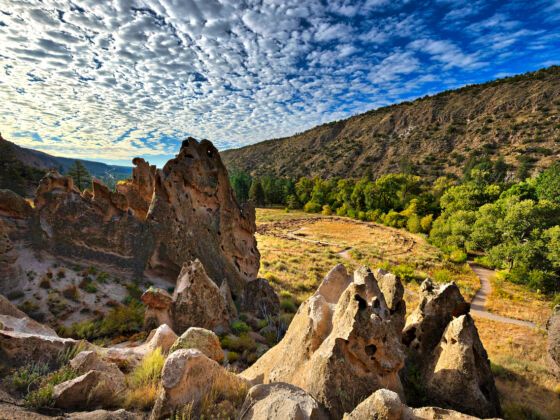When the weather is cold but you still want to get outdoors, one of the best places to do that is New Mexico. The state, already ideal for a winter road trip, is a place where you can ski one day and hike the next. More notably, New Mexico’s landscapes combine stunning natural beauty, including one of the country’s newest national parks, and rich, historical Indigenous treasures. Just know that this land remains sacred to many Native peoples, so treat it with respect.
But do visit, since your showing up lets decision-makers know that this land should be protected. In fall and winter, here are our favorite New Mexico hiking destinations. Just note that New Mexico is arid and its high elevations make the air dryer still. Always carry plenty of water, even when the temperatures feel comfortably cool.







